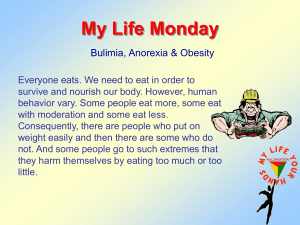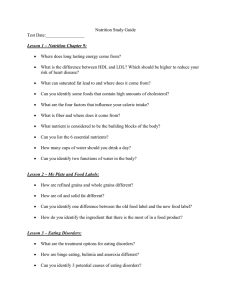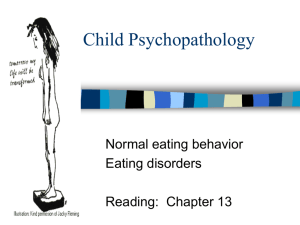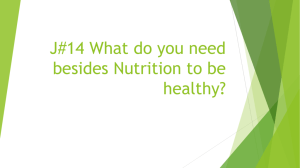Unit VII Eating Disorders Mental Health Nursing I NURS 1300
advertisement
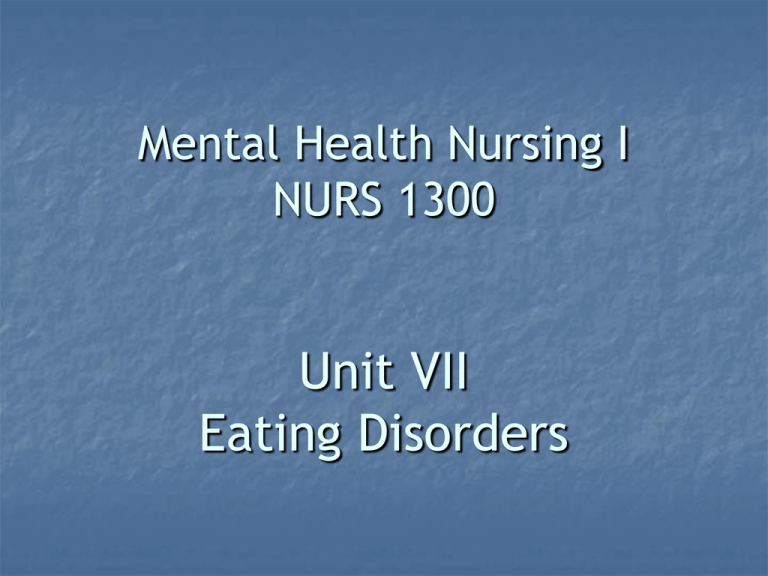
Mental Health Nursing I NURS 1300 Unit VII Eating Disorders Objective 1 Define anorexia, bulimia, and morbid obesity Anorexia = self-starvation with a disruption in metabolism due to inadequate calorie intake Bulimia = food-gorging binges followed by the purging of food, usually through selfinduced vomiting or laxative abuse Morbid obesity = chronic disease defined by having a Body Mass Index (BMI) of more than 40 Objective 2 Identify populations at risk for eating disorders Anorexia – individuals experiencing major life changes adolescent girls and young adult women athletes, actors, dancers, models, or anyone whose thinness is a professional requirement Objective 2 (cont’d) Bulimia – 90% of people suffering from bulimia are women other risk factors include exposure to American ideals of beauty Morbid obesity – all populations at risk 61% of adults in the U.S. are overweight more and more children are falling victim to obesity Objective 3 Identify possible causes of eating disorders Anorexia Low self-esteem Social isolation Perfectionism Tends to run in families Stressful events Uncomfortable emotions control is achieved over weight and food satisfaction in this area becomes important if the rest of one’s life is chaotic and emotionally painful Bulimia Dieting Stress Uncomfortable emotions purging and other actions to prevent weight gain allows one to feel more in control of his or her life control over weight eases stress and anxiety Morbid obesity Strong genetic component Excessive calorie intake Thyroid disorders Lack of physical activity Current trends and attitudes in the U.S. food as social outlet high-fat/high-calorie “comfort” foods “clean-your-plate” mentality Objective 4 Identify symptoms of three eating disorders Anorexia Thinking one looks fat even if bonethin Brittle hair and nails Skin dry and yellow Depression Hypothermia Lanugo Strange eating habits cutting food into tiny pieces preparing elaborate meals one doesn’t eat Bulimia Individual may be thin, overweight, or average Use of diet pills Going to the bathroom shortly after eating Exercising even when hurt, sick, or tired Signs of vomiting Distorted body image Moody or sad Morbid obesity Type II diabetes Hypertension Heart disease Gall bladder disease Stroke Depression Low self-esteem Objective 5 List nursing care and medical treatments for clients with eating disorders Anorexia Interventions aimed at restoring weight to reverse medical complications Hospitalization to stabilize dangerously low weight Individual, family, and group therapy Cognitive-behavioral therapy Psychotherapy to deal with underlying emotional issues Bulimia Learning healthy eating patterns Coping with thoughts and feelings Individual, group, and family therapy Medications antidepressants anxiolytics Morbid obesity Sensitivity training due to discrimination by health care workers Weight management Nutrition education Exercise program Bariatric surgery gastric bypass gastric banding
